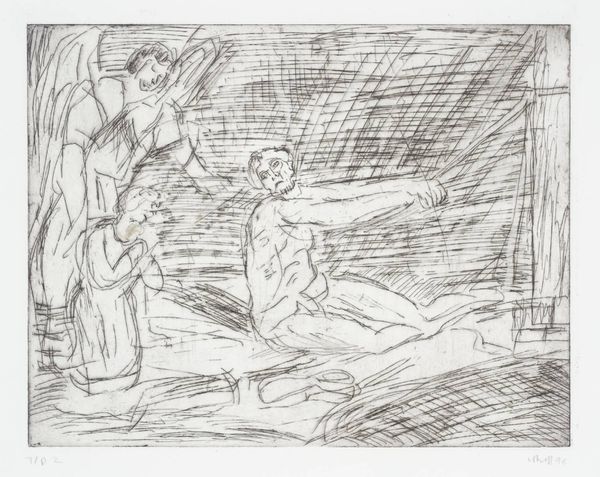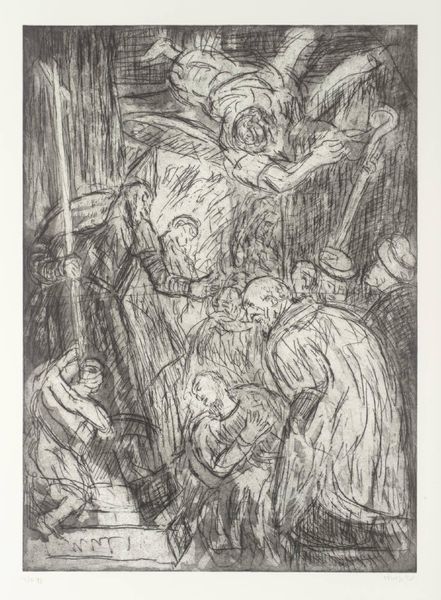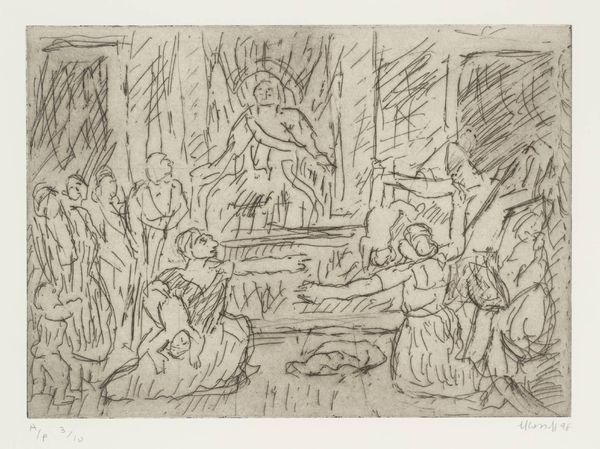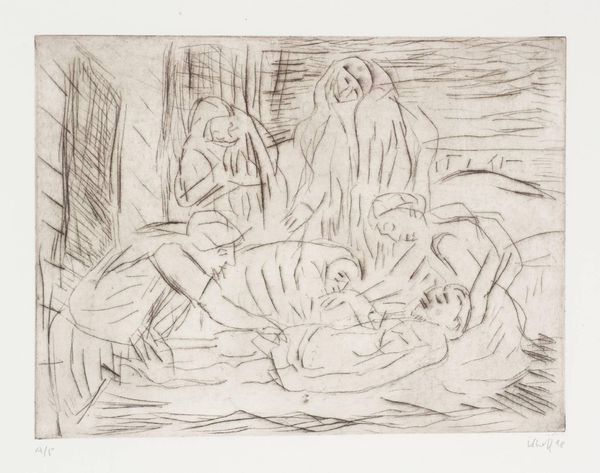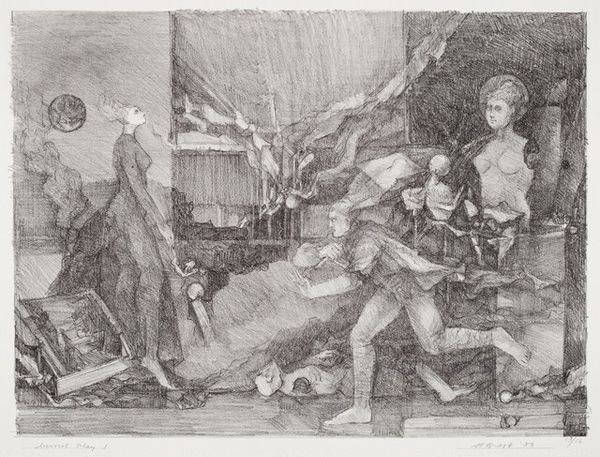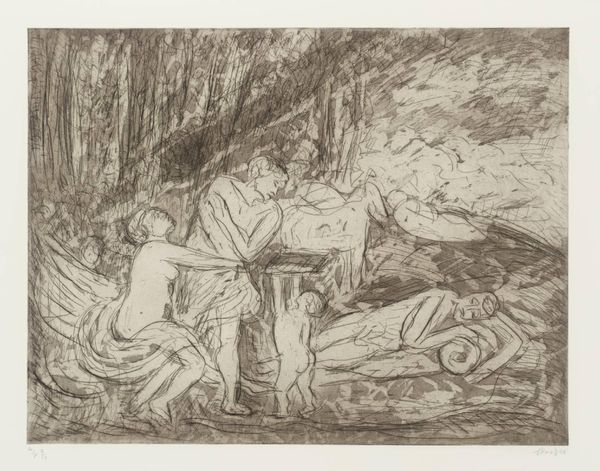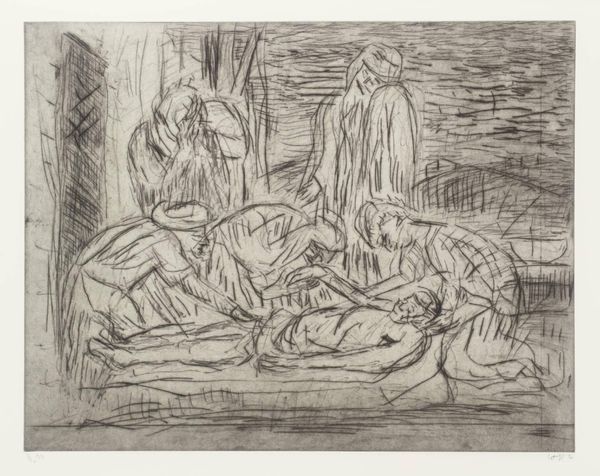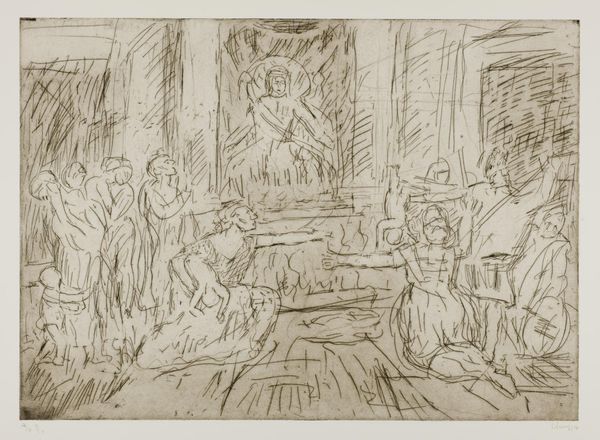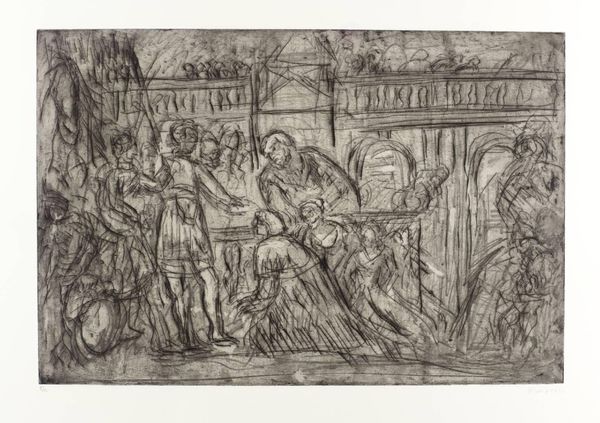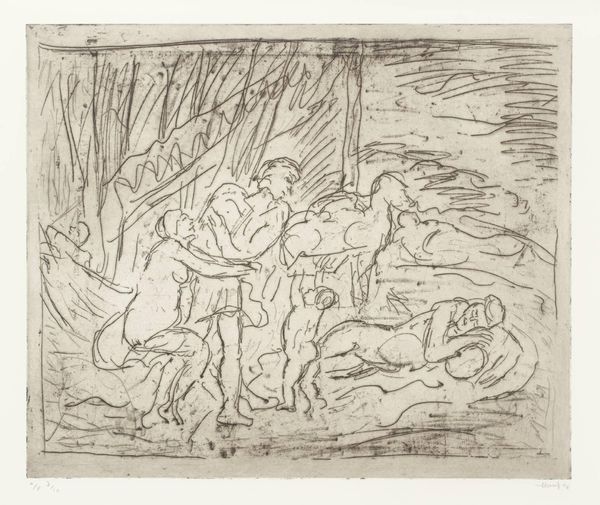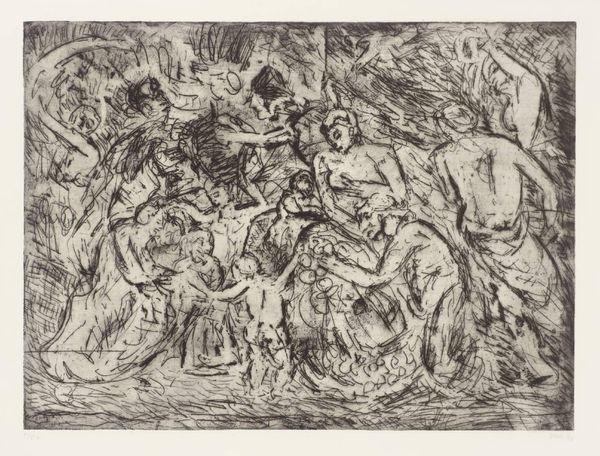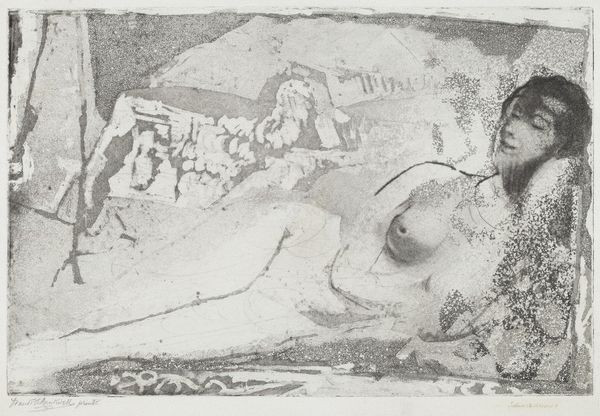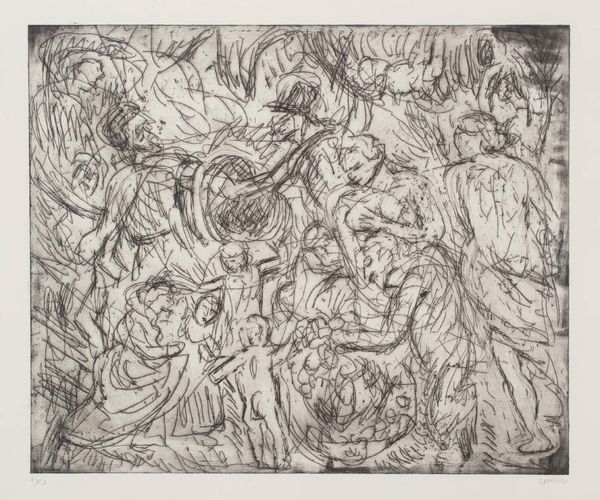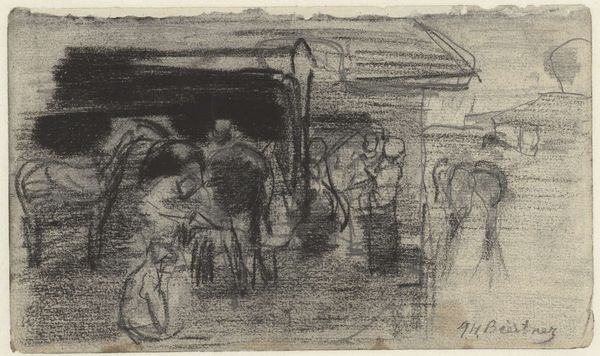
Dimensions: image: 204 x 250 mm
Copyright: © Leon Kossoff | CC-BY-NC-ND 4.0 DEED, Photo: Tate
Editor: Leon Kossoff's "Christ after the Flagellation Contemplated by the Christian Soul (2)" is a small, intense etching. The scene feels both intimate and raw. What strikes you about the way Kossoff represents this religious subject? Curator: The power here lies in Kossoff's ability to reinterpret a classic scene through a modern, almost brutalist lens. Notice how the rough lines and heavy shading seem to emphasize the suffering and the social realities of religious iconography. The choice of etching, typically associated with reproduction, adds another layer of commentary on the accessibility and dissemination of religious imagery. Editor: So, you're saying the medium itself plays a role in how we understand the message? Curator: Absolutely. Consider the broader historical context: Kossoff, working in post-war London, uses this traditional subject to perhaps reflect on contemporary anxieties and societal fractures. It makes us question the role and relevance of religion in a changing world. Editor: That's a completely different way of looking at it than I initially thought. Thanks! Curator: My pleasure! It is always worth questioning how the historical and cultural context shapes our understanding and our personal connection to artworks.
Comments
tate 7 months ago
⋮
http://www.tate.org.uk/art/artworks/kossoff-christ-after-the-flagellation-contemplated-by-the-christian-soul-2-p11695
Join the conversation
Join millions of artists and users on Artera today and experience the ultimate creative platform.
tate 7 months ago
⋮
This print is one of many etchings executed by Leon Kossoff in response to, and literally in the presence of, oil paintings by old masters; in this case Christ After the Flagellation Contemplated by the Christian Soul, probably 1628-9, by Diego Velazquez (1599-1660), owned by the National Gallery, London. Tate owns three prints by Kossoff after this Velazquez painting (Tate P11694-6). The artist’s ability to explore a number of separate responses while making drawings and prints from a single subject is illustrated in these etchings. This print was never published as an edition; Tate owns the second trial proof.
